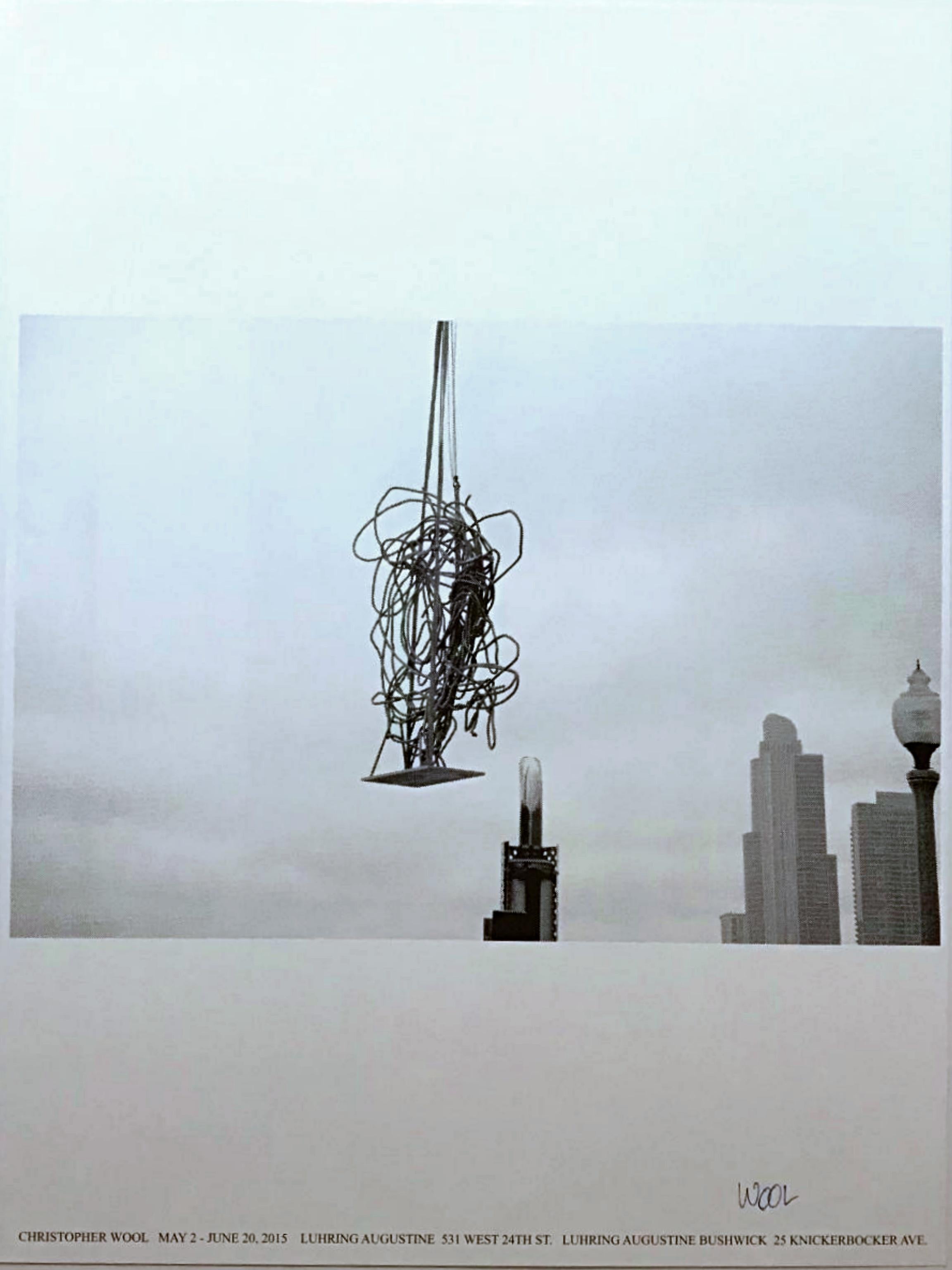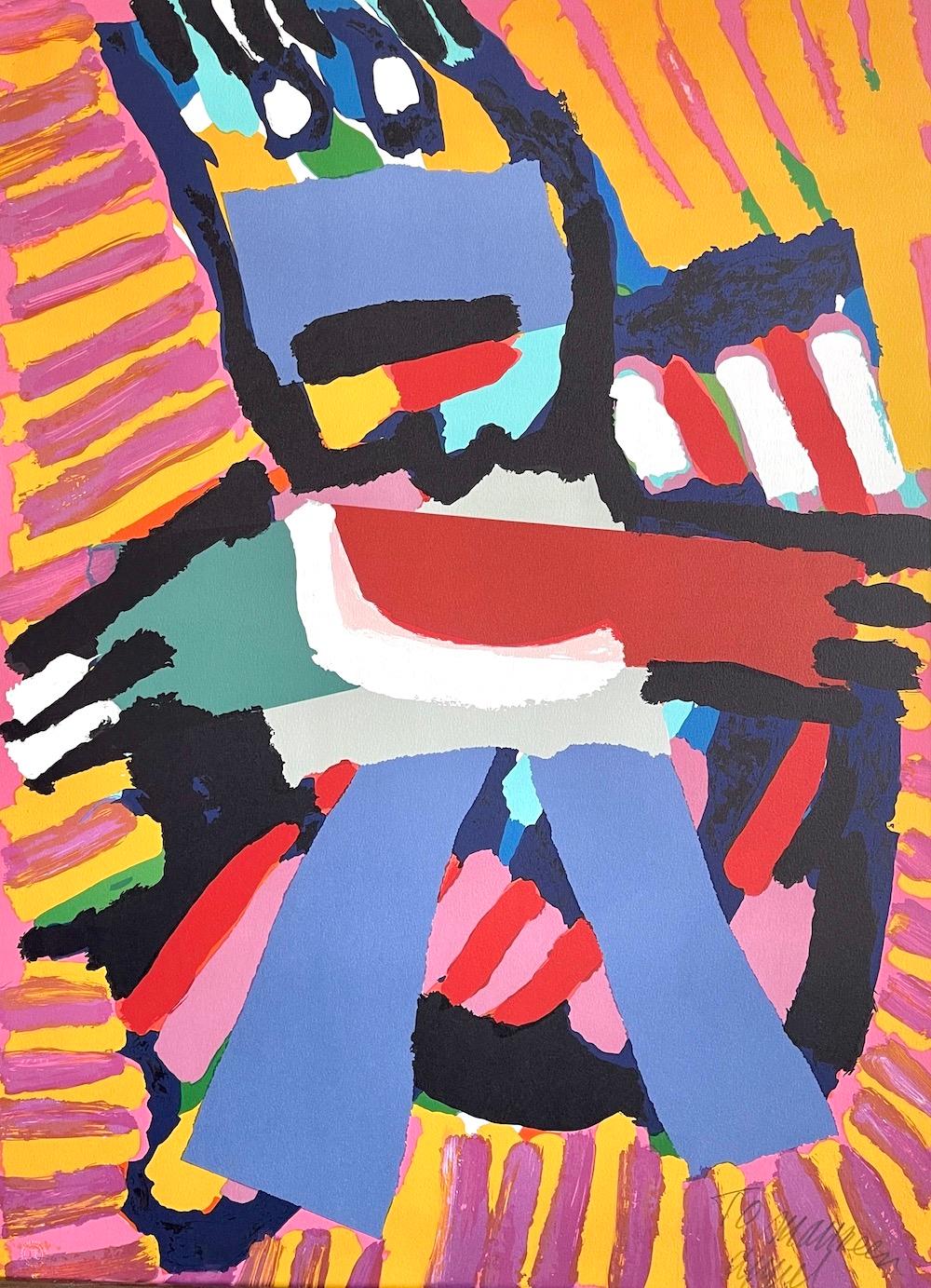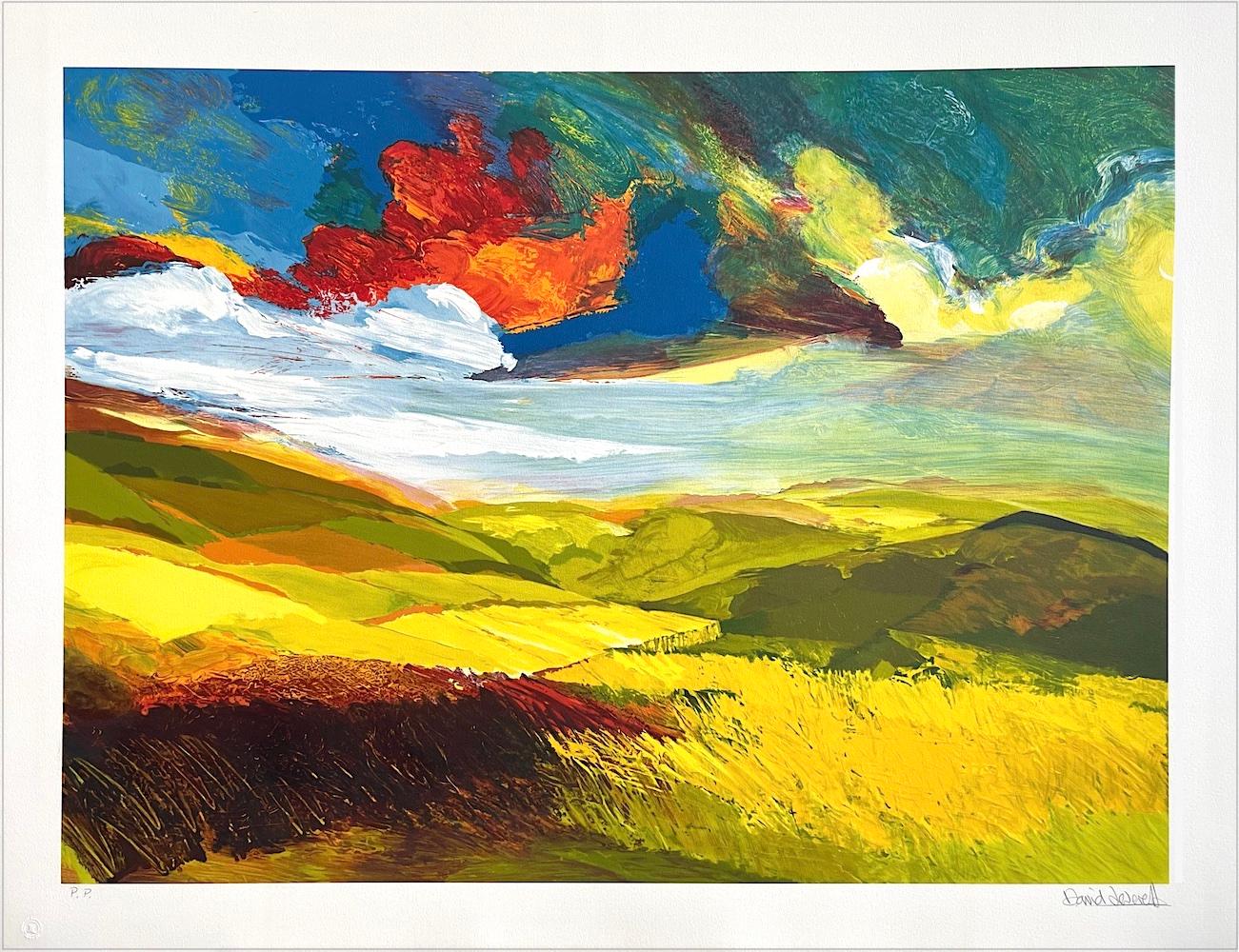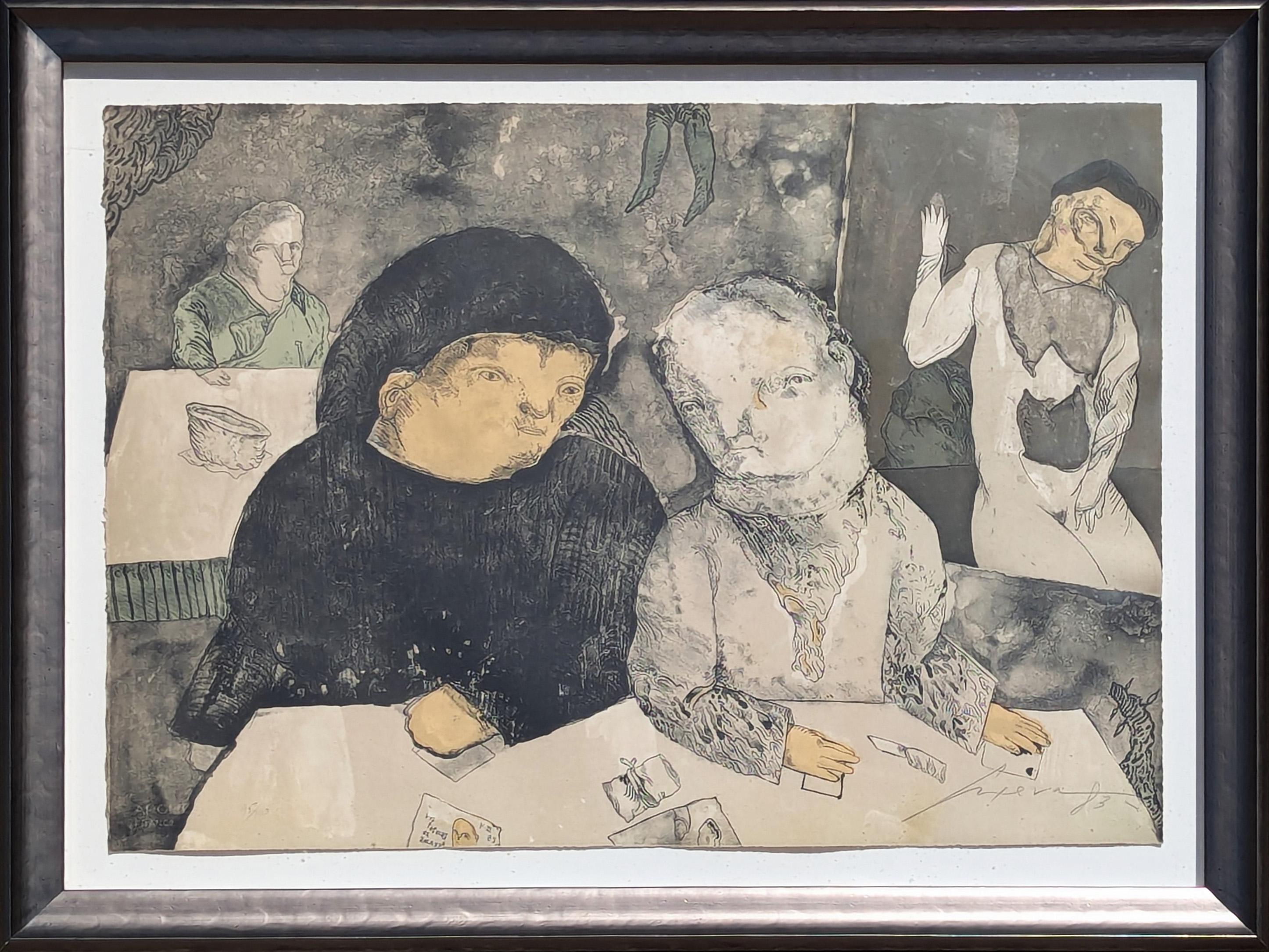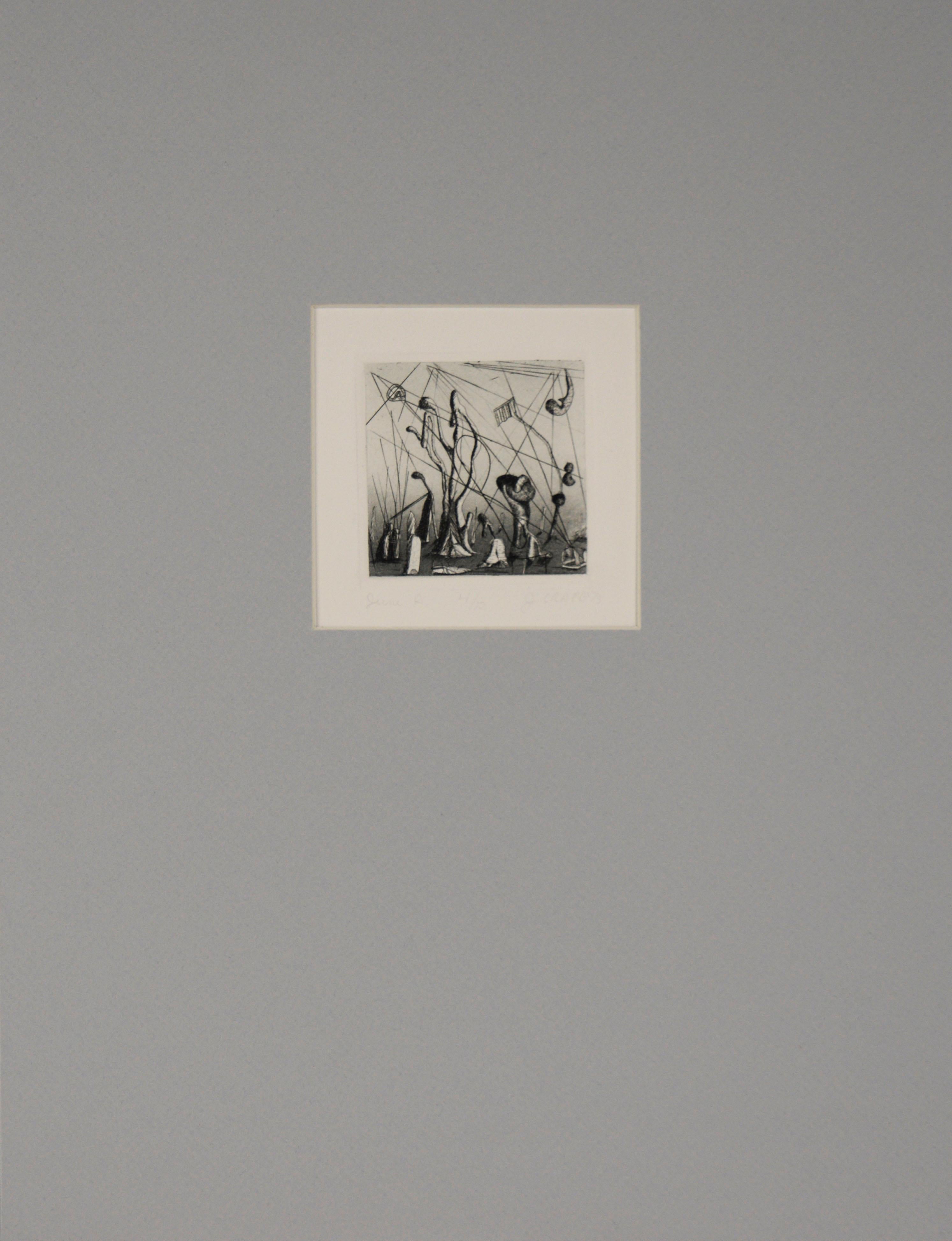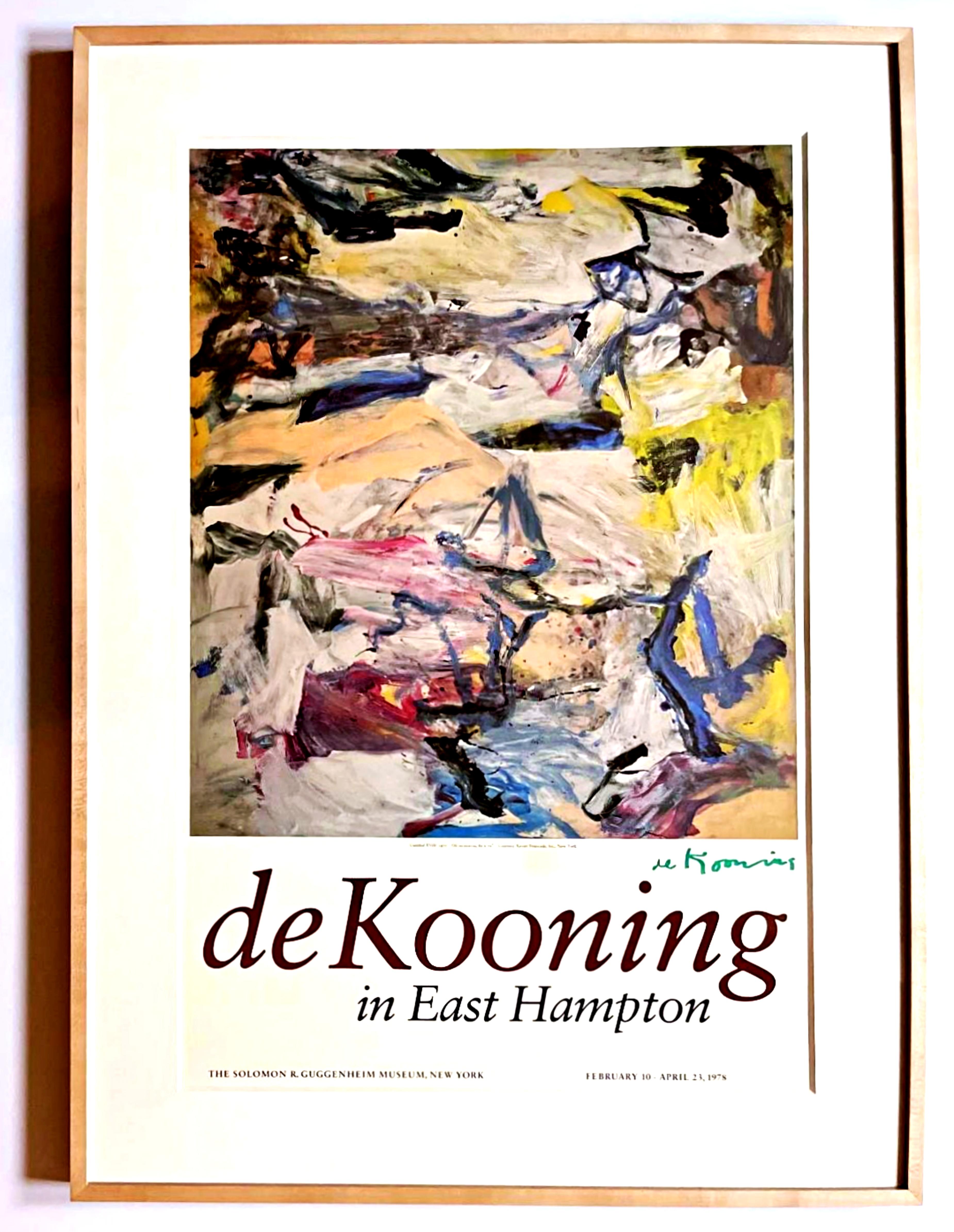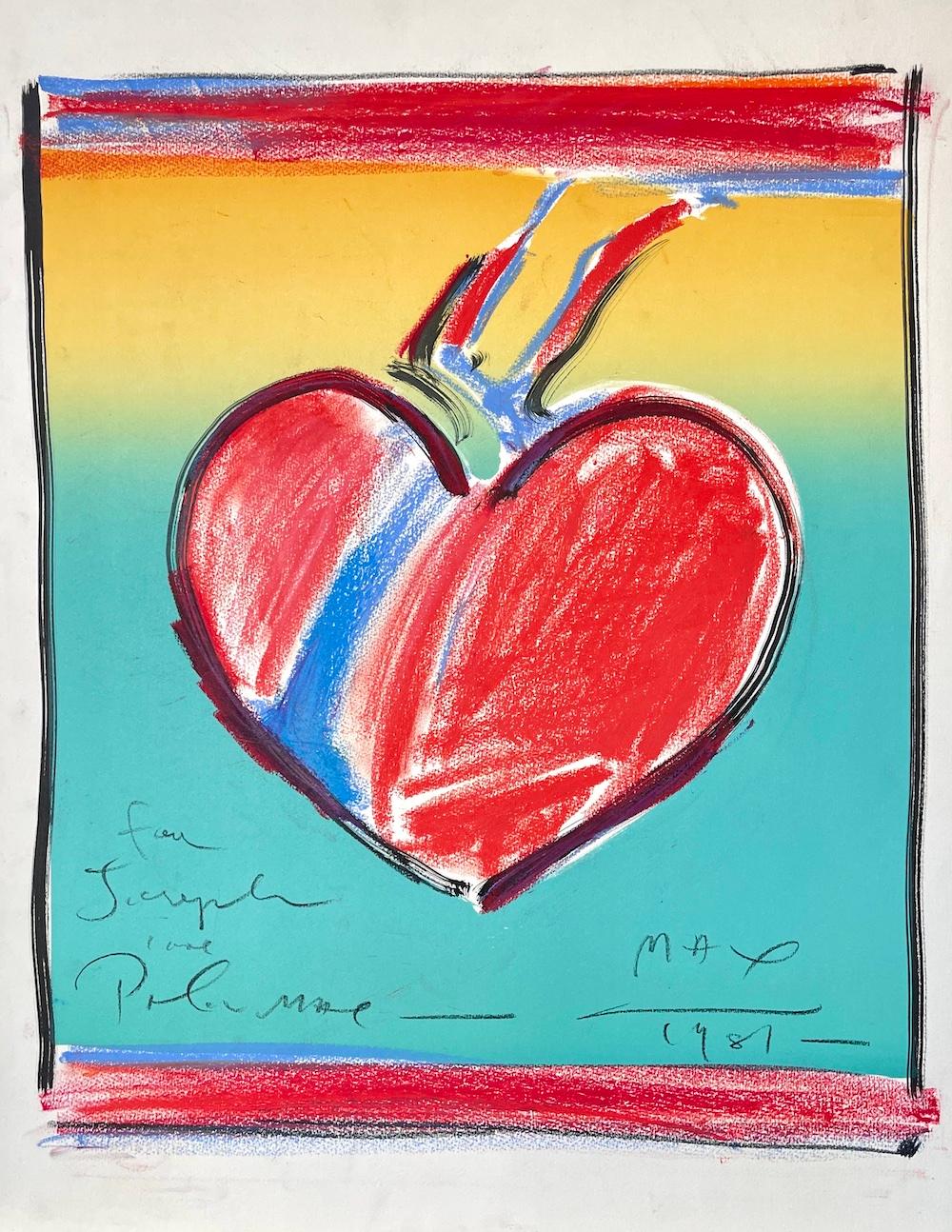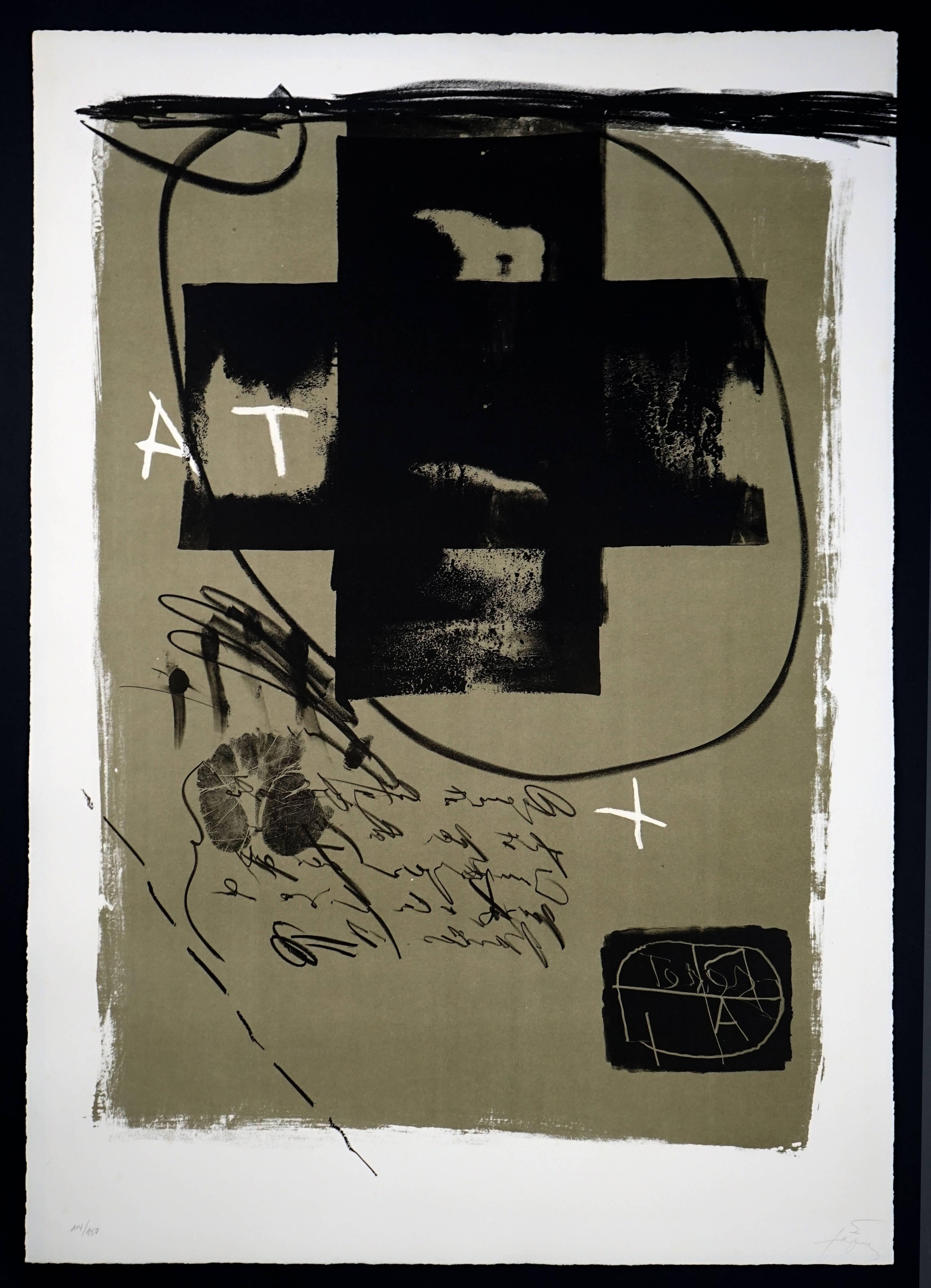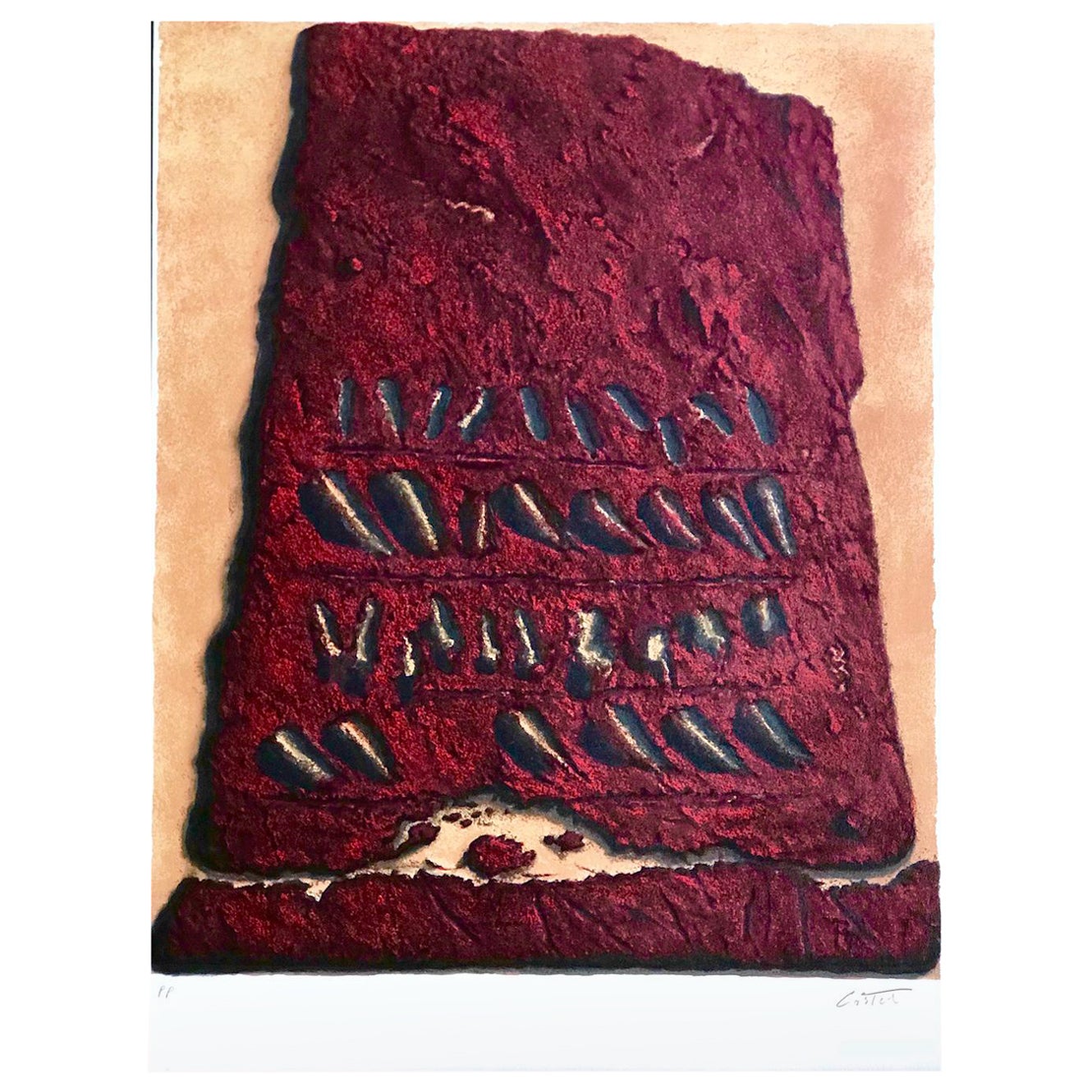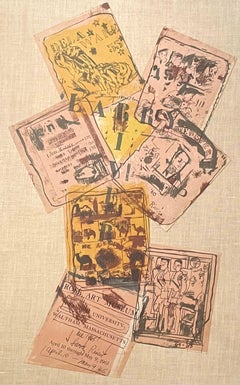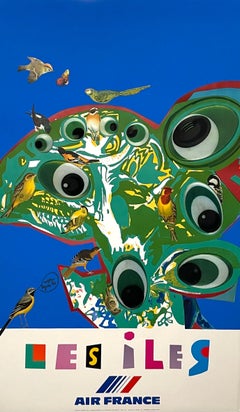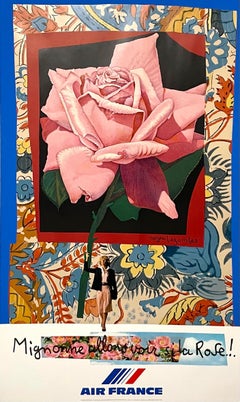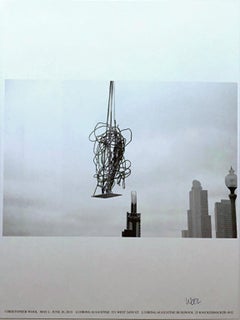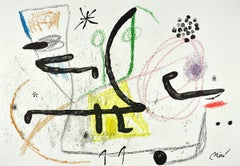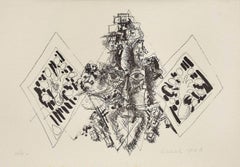
Untitled Israeli Abstract
View Similar Items
Want more images or videos?
Request additional images or videos from the seller
1 of 4
Schlomo SchwartzUntitled Israeli Abstract
$350List Price
About the Item
- Creator:Schlomo Schwartz
- Dimensions:Height: 9.5 in (24.13 cm)Width: 13.5 in (34.29 cm)
- Medium:
- Period:
- Condition:
- Gallery Location:Surfside, FL
- Reference Number:1stDibs: LU3822045123
About the Seller
4.9
Platinum Seller
Premium sellers with a 4.7+ rating and 24-hour response times
Established in 1995
1stDibs seller since 2014
1,777 sales on 1stDibs
Typical response time: 1 hour
Authenticity Guarantee
In the unlikely event there’s an issue with an item’s authenticity, contact us within 1 year for a full refund. DetailsMoney-Back Guarantee
If your item is not as described, is damaged in transit, or does not arrive, contact us within 7 days for a full refund. Details24-Hour Cancellation
You have a 24-hour grace period in which to reconsider your purchase, with no questions asked.Vetted Professional Sellers
Our world-class sellers must adhere to strict standards for service and quality, maintaining the integrity of our listings.Price-Match Guarantee
If you find that a seller listed the same item for a lower price elsewhere, we’ll match it.Trusted Global Delivery
Our best-in-class carrier network provides specialized shipping options worldwide, including custom delivery.More From This Seller
View AllOriginal Vintage Pop Art 1965 Collage Lithograph Larry Rivers Poster Brandeis
By Larry Rivers
Located in Surfside, FL
Larry Rivers
Modernist mixed media "Brandeis Show Collage" work on cut paper. (this appears to be a vintage lithograph. It has a label that describes it as watercolor and charcoal on back. It is definitley hand cut.) Signed in several areas and stencilled across center.
Work measures approx. 34 3/4" height x 20 3/4" width. Frame measures approx. 38 3/8" height x 26 1/4" width overall including frame. Silver paint loss on frame.
Larry Rivers (born Yitzroch Loiza Grossberg) (1923 – 2002) was an American artist, musician, filmmaker, and occasional actor. Considered by many scholars to be the "Godfather" and "Grandfather" of Pop art, he was one of the first artists to merge non-objective, non-narrative art with narrative and objective abstraction.
Rivers took up painting in 1945 and studied at the Hans Hofmann School from 1947–48. He earned a BA in art education from New York University in 1951.
His work was quickly acquired by the Museum of Modern Art. A 1953 painting Washington Crossing the Delaware was damaged in fire at the museum five years later.
He was a pop artist of the New York School, reproducing everyday objects of American popular culture as art. He was one of eleven New York artists featured in the opening exhibition at the Terrain Gallery in 1955 along with Paul Mommer, Leonard Baskin, Peter Grippe
During the early 1960s Rivers lived in the Hotel Chelsea, notable for its artistic residents such as Bob Dylan, Janis Joplin, Leonard Cohen, Arthur C. Clarke, Dylan Thomas, Sid Vicious and multiple people associated with Andy Warhol Factory and where he brought several of his French nouveau réalistes friends like Yves Klein who wrote there in April 1961 his Manifeste de l'hôtel Chelsea, Arman, Martial Raysse, Jean Tinguely, Niki de Saint-Phalle, Christo & Jean Claude, Daniel Spoerri or Alain Jacquet, several of whom, like Rivers, left some pieces of art in the lobby of the hotel for payment of their rooms. In 1965, Rivers had his first comprehensive retrospective in five important American museums.
His final work for the exhibition was The History of the Russian Revolution, which was later on extended permanent display at the Hirshhorn Museum and Sculpture Garden in Washington, DC. He spent 1967 in London collaborating with the American painter Howard Kanovitz.
In 1968, Rivers traveled to Africa for a second time with Pierre Dominique Gaisseau to finish their documentary Africa and I, which was a part of the groundbreaking NBC series Experiments in Television. During this trip they narrowly escaped execution as suspected mercenaries.
During the 1970s, Rivers worked closely with Diana Molinari and Michel Auder on many video tape projects, including the infamous Tits, and also worked in neon.
Rivers's legs appeared in John Lennon and Yoko Ono's 1971 film Up Your Legs Forever.
From 1940–1945 he worked as a jazz saxophonist in New York City, changing his name to Larry Rivers in 1940 after being introduced as "Larry Rivers and the Mudcats" at a local pub. He studied at the Juilliard School of Music in 1945–46, along with Miles Davis, with whom he remained friends until Davis's death in 1991.
Larry Rivers was born in the Bronx to Samuel and Sonya Grossberg, Jewish immigrants from Ukraine. In 1945, he married Augusta Berger, and they had one son, Steven. Rivers also adopted Berger's son from a previous relationship, Joseph, and reared both children after the couple divorced. In 1949 he had his first one-man exhibition at the Jane Street Gallery in New York. This same year, he met and became friends with John Ashbery, and Kenneth Koch. In 1950 he met Frank O’Hara. This same year he took his first trip to Europe spending eight months in Paris, France, reading and writing poetry. Beginning in 1950 and continuing until Frank’s death in July of 1966, Larry Rivers and Frank O’Hara cultivated a uniquely creative friendship that produced numerous collaborations, as well as inspired paintings and poems. In 1951 Rivers’ works were shown at the Tibor de Nagy Gallery where he continued to show annually (except 1955) for about 10 years. In 1954 he had his first exhibition of sculptures at the Stable Gallery, New York. In 1955 The Museum of Modern Art acquired Washington Crossing the Delaware. This same year he won 3rd prize in the Corcoran Gallery national painting competition for “Self-Figure.” Rivers’ also painted “Double Portrait of Berdie” in 1955, which was soon purchased by the Whitney Museum.
In 1957 he and Frank O’Hara began work on “Stones,” a collaborative mix of images and poetry in a series of lithograph for Tatyana Grosman’s company ULAE. During this time he also appeared on the television game show “The $64,000.00 Question” where along with another contestant, they both won, each receiving $32,000.00. In 1958 he again spent time in Paris and played in various jazz bands. In 1959 he painted Cedar Bar Menu...
Category
1960s Pop Art Mixed Media
Materials
Lithograph
French Modernist Mourlot Lithograph Vintage Air France Poster Roger Bezombes
By Roger Bezombes
Located in Surfside, FL
Vintage French Travel Poster, Air france
Roger Bezombes
(1913-1994) French
Bezombes was a painter, sculptor, medalist, and designer. He studied in Paris, at the École des Beaux-Arts, and was much influenced by his friendship with Maurice Denis. Heavily influenced by surrealism, He worked principally as a painter, adopting the saturated Fauvist colors of Henri Matisse in landscapes and figure studies often based on observation of “exotic” cultures, notably Mediterranean and North African. Constrained, because a very young orphan, to all kinds of professions which provide him with the material means to devote himself to painting - he participated in 1930 in the installation of the exhibition of the Bauhaus at the Grand Palais-, Roger Bezombes is student of the National School of Fine Arts in Paris. (Ecole des Beaux Artes) He was trained in the art of fresco by Paul Baudoüin, René Barotte nonetheless restores that the young man's preference goes to the practice of "truancy" which he uses to make copies at the Louvre Museum. It’s the time when Paul Gauguin’s paintings, Vincent Van Gogh and Henri Matisse are revealed to him by Maurice Denis with whom he will remain close until his accidental death, painting him on his funeral bed on November 14, 1943. He executed surrealist tapestry designs for Aubusson and Gobelin tapestries, posters (winning the Grand Prix de l'Affiche Francaise in 1984), costumes and sets for ballets at the Metropolitan Opera House in New York, reliefs and murals. In 1965 he took up medal-making, expressing in his numerous metallic works for the Paris Mint that obsession with found objects which is also evident in his large-scale sculpture and in his posters.
He designed posters for Air France and for the French national railways.
Roger Bezombes went to Africa for the first time in 1936 thanks to a travel grant and received the same year the second grand prize of Rome . In 1937 he traveled around Morocco where he became friends with Albert Camus. The year 1938 offered him both his first solo exhibition at the Charpentier gallery in Paris with paintings and gouaches on the theme of Morocco and the attribution of the national grand prize for the arts, earning him a great journey which , from Dakar to Algiers , takes it through Chad , Tamanrasset and Hoggar.
Roger Bezombes became a professor at the Julian Academy in 1950. For him, 1951 was the year of a trip to Greece and the year where he began his relationship with tapestry work.
Roger Bezombes visited Israel in 1953, Tunisia and Egypt in 1954. He was appointed official painter of the Navy in 1955. Pierre Mazars analyzes that “after a period where we notice the influence of Van Gogh and GeorgesBraque, particularly in his landscapes of Provence, he came to a more schematic writing, the colored spots and the thicknesses of material taking more of importance as the subject. He even performed composite works, half-watercolors, half-pasted papers, in which he incorporated pieces of newspapers”. He was elected titular to the Academy of Overseas Sciences in 1978. "The range of Bezombes' talent forms is remarkable,” writes Lynne Thornton, “ranging from paintings, murals, travel posters, tapestry cartons, book illustrations, monumental ceramic decorations, ballet and theater sets, totem sculptures, sculpture objects, jewelry and medallions”. He was part of the mid century mod School of Paris that included Leon Zack, Bernard Lorjou, Paul Augustin Aizpiri, Gabriel Godard, Michel Henry, Hans Erni, Bengt Lindstrom, Alfred Manessier, Andre Hambourg, Raymond Legueult and Jean Rigaud.
Select Solo Exhibitions:
1938: Galerie Charpentier, Paris
1950, '53, '55, '57: Galerie Andre Weil, Paris
1953:Wildenstein Gallery, London
1954: Institut Francais, Cologne
1956: Galerie Matarasso, Nice
1957: Horn Gallery, Luxembourg; Guilde de la Gravure, Paris
1958: Denys-Puech Museum, Rodez
1962: Musee de l'Athenee, Geneva;
Chateau Grimaldi, Cagnes-sur-Mer
1966: Galerie des Ponchettes, Nice
1967: Galerie Martel, Montreal
1968: Romanet-Vercel Gallery, New York;
Reattu Museum, Arles; Le Corbusier Center, Firminy
1969: Galerie Philippe...
Category
1980s Modern Abstract Prints
Materials
Lithograph, Offset
French Modernist Mourlot Lithograph Vintage Air France Poster Roger Bezombes
By Roger Bezombes
Located in Surfside, FL
Vintage French Travel Poster, Air France
Roger Bezombes
(1913-1994) French
Bezombes was a painter, sculptor, medalist, and designer. He studied in Paris, at the École des Beaux-Arts, and was much influenced by his friendship with Maurice Denis. Heavily influenced by surrealism, He worked principally as a painter, adopting the saturated Fauvist colors of Henri Matisse in landscapes and figure studies often based on observation of “exotic” cultures, notably Mediterranean and North African. Constrained, because a very young orphan, to all kinds of professions which provide him with the material means to devote himself to painting - he participated in 1930 in the installation of the exhibition of the Bauhaus at the Grand Palais-, Roger Bezombes is student of the National School of Fine Arts in Paris. (Ecole des Beaux Artes) He was trained in the art of fresco by Paul Baudoüin, René Barotte nonetheless restores that the young man's preference goes to the practice of "truancy" which he uses to make copies at the Louvre Museum. It’s the time when Paul Gauguin’s paintings, Vincent Van Gogh and Henri Matisse are revealed to him by Maurice Denis with whom he will remain close until his accidental death, painting him on his funeral bed on November 14, 1943. He executed surrealist tapestry designs for Aubusson and Gobelin tapestries, posters (winning the Grand Prix de l'Affiche Francaise in 1984), costumes and sets for ballets at the Metropolitan Opera House in New York, reliefs and murals. In 1965 he took up medal-making, expressing in his numerous metallic works for the Paris Mint that obsession with found objects which is also evident in his large-scale sculpture and in his posters.
He designed posters for Air France and for the French national railways.
Roger Bezombes went to Africa for the first time in 1936 thanks to a travel grant and received the same year the second grand prize of Rome . In 1937 he traveled around Morocco where he became friends with Albert Camus. The year 1938 offered him both his first solo exhibition at the Charpentier gallery in Paris with paintings and gouaches on the theme of Morocco and the attribution of the national grand prize for the arts, earning him a great journey which , from Dakar to Algiers , takes it through Chad , Tamanrasset and Hoggar.
Roger Bezombes became a professor at the Julian Academy in 1950. For him, 1951 was the year of a trip to Greece and the year where he began his relationship with tapestry work.
Roger Bezombes visited Israel in 1953, Tunisia and Egypt in 1954. He was appointed official painter of the Navy in 1955. Pierre Mazars analyzes that “after a period where we notice the influence of Van Gogh and GeorgesBraque, particularly in his landscapes of Provence, he came to a more schematic writing, the colored spots and the thicknesses of material taking more of importance as the subject. He even performed composite works, half-watercolors, half-pasted papers, in which he incorporated pieces of newspapers”. He was elected titular to the Academy of Overseas Sciences in 1978. "The range of Bezombes' talent forms is remarkable,” writes Lynne Thornton, “ranging from paintings, murals, travel posters, tapestry cartons, book illustrations, monumental ceramic decorations, ballet and theater sets, totem sculptures, sculpture objects, jewelry and medallions”. He was part of the mid century mod School of Paris that included Leon Zack, Bernard Lorjou, Paul Augustin Aizpiri, Gabriel Godard, Michel Henry, Hans Erni, Bengt Lindstrom, Alfred Manessier, Andre Hambourg, Raymond Legueult and Jean Rigaud.
Select Solo Exhibitions:
1938: Galerie Charpentier, Paris
1950, '53, '55, '57: Galerie Andre Weil, Paris
1953:Wildenstein Gallery, London
1954: Institut Francais, Cologne
1956: Galerie Matarasso, Nice
1957: Horn Gallery, Luxembourg; Guilde de la Gravure, Paris
1958: Denys-Puech Museum, Rodez
1962: Musee de l'Athenee, Geneva;
Chateau Grimaldi, Cagnes-sur-Mer
1966: Galerie des Ponchettes, Nice
1967: Galerie Martel, Montreal
1968: Romanet-Vercel Gallery, New York;
Reattu Museum, Arles; Le Corbusier Center, Firminy
1969: Galerie Philippe...
Category
1980s Modern Abstract Prints
Materials
Lithograph, Offset
French Modernist Mourlot Lithograph Vintage Air France Poster Roger Bezombes
By Roger Bezombes
Located in Surfside, FL
Vintage French Travel Poster, Air france
Roger Bezombes
(1913-1994) French
Bezombes was a painter, sculptor, medalist, and designer. He studied in Paris, at the École des Beaux-Arts, and was much influenced by his friendship with Maurice Denis. Heavily influenced by surrealism, He worked principally as a painter, adopting the saturated Fauvist colors of Henri Matisse in landscapes and figure studies often based on observation of “exotic” cultures, notably Mediterranean and North African. Constrained, because a very young orphan, to all kinds of professions which provide him with the material means to devote himself to painting - he participated in 1930 in the installation of the exhibition of the Bauhaus at the Grand Palais-, Roger Bezombes is student of the National School of Fine Arts in Paris. (Ecole des Beaux Artes) He was trained in the art of fresco by Paul Baudoüin, René Barotte nonetheless restores that the young man's preference goes to the practice of "truancy" which he uses to make copies at the Louvre Museum. It’s the time when Paul Gauguin’s paintings, Vincent Van Gogh and Henri Matisse are revealed to him by Maurice Denis with whom he will remain close until his accidental death, painting him on his funeral bed on November 14, 1943. He executed surrealist tapestry designs for Aubusson and Gobelin tapestries, posters (winning the Grand Prix de l'Affiche Francaise in 1984), costumes and sets for ballets at the Metropolitan Opera House in New York, reliefs and murals. In 1965 he took up medal-making, expressing in his numerous metallic works for the Paris Mint that obsession with found objects which is also evident in his large-scale sculpture and in his posters.
He designed posters for Air France and for the French national railways.
Roger Bezombes went to Africa for the first time in 1936 thanks to a travel grant and received the same year the second grand prize of Rome . In 1937 he traveled around Morocco where he became friends with Albert Camus. The year 1938 offered him both his first solo exhibition at the Charpentier gallery in Paris with paintings and gouaches on the theme of Morocco and the attribution of the national grand prize for the arts, earning him a great journey which , from Dakar to Algiers , takes it through Chad , Tamanrasset and Hoggar.
Roger Bezombes became a professor at the Julian Academy in 1950. For him, 1951 was the year of a trip to Greece and the year where he began his relationship with tapestry work.
Roger Bezombes visited Israel in 1953, Tunisia and Egypt in 1954. He was appointed official painter of the Navy in 1955. Pierre Mazars analyzes that “after a period where we notice the influence of Van Gogh and GeorgesBraque, particularly in his landscapes of Provence, he came to a more schematic writing, the colored spots and the thicknesses of material taking more of importance as the subject. He even performed composite works, half-watercolors, half-pasted papers, in which he incorporated pieces of newspapers”. He was elected titular to the Academy of Overseas Sciences in 1978. "The range of Bezombes' talent forms is remarkable,” writes Lynne Thornton, “ranging from paintings, murals, travel posters, tapestry cartons, book illustrations, monumental ceramic decorations, ballet and theater sets, totem sculptures, sculpture objects, jewelry and medallions”. He was part of the mid century mod School of Paris that included Leon Zack, Bernard Lorjou, Paul Augustin Aizpiri, Gabriel Godard, Michel Henry, Hans Erni, Bengt Lindstrom, Alfred Manessier, Andre Hambourg, Raymond Legueult and Jean Rigaud.
Select Solo Exhibitions:
1938: Galerie Charpentier, Paris
1950, '53, '55, '57: Galerie Andre Weil, Paris
1953:Wildenstein Gallery, London
1954: Institut Francais, Cologne
1956: Galerie Matarasso, Nice
1957: Horn Gallery, Luxembourg; Guilde de la Gravure, Paris
1958: Denys-Puech Museum, Rodez
1962: Musee de l'Athenee, Geneva;
Chateau Grimaldi, Cagnes-sur-Mer
1966: Galerie des Ponchettes, Nice
1967: Galerie Martel, Montreal
1968: Romanet-Vercel Gallery, New York;
Reattu Museum, Arles; Le Corbusier Center, Firminy
1969: Galerie Philippe...
Category
1980s Modern Abstract Prints
Materials
Lithograph
Russian French Avant Garde Lithograph Rhythm in Colour Vibrant Abstract Print
By Léopold Survage
Located in Surfside, FL
Léopold Survage (French/Russian, 1879-1968),
"Rythmes Colorés", 1967-1968
Lithograph on Vélin d'Arches paper, Printed by Mourlot, Paris
Hand signed in pencil and numbered "AN 16/75"...
Category
1960s Abstract Abstract Prints
Materials
Lithograph
Russian French Avant Garde Lithograph Rhythm in Colour Vibrant Abstract Print
By Léopold Survage
Located in Surfside, FL
Léopold Survage (French/Russian, 1879-1968),
"Rythmes Colorés", 1967-1968
Lithograph on Vélin d'Arches paper, Printed by Mourlot, Paris
Hand signed in pencil and numbered "AN 16/75"...
Category
1960s Cubist Abstract Prints
Materials
Lithograph
You May Also Like
Christopher Wool offset lithograph Minimalist print Hand signed, dated by artist
By Christopher Wool
Located in New York, NY
Christopher Wool at Luhring Augustine, (Hand Signed), 2015
Double sided offset lithograph. Hand signed by renowned Minimalist artist Christopher Wool
24 × 19 inches
Signed in blue i...
Category
2010s Minimalist Abstract Prints
Materials
Permanent Marker, Lithograph, Offset
Joan Miró - MARAVILLAS CON VARIACIONES... Lithograph Contemporary Art Abstract
By Joan Miró
Located in Madrid, Madrid
Joan Miró - Maravillas con variaciones acrósticas en el jardín de Miró IX
Date of creation: 1975
Medium: Lithograph
Media: Gvarro paper
Edition: 1500
Size: 49,5 x 71 cm
Observations:...
Category
1970s Abstract Abstract Prints
Materials
Lithograph
BLUE BOY Signed Lithograph, Abstract Figure, Blue Pants, Pink Yellow Stripes
By Karel Appel
Located in Union City, NJ
BLUE BOY is a limited edition lithograph by the Dutch artist Karel Appel, printed using hand lithography techniques on archival Arches paper, 100% acid free. BLUE BOY presents a fant...
Category
1980s Abstract Portrait Prints
Materials
Lithograph
$3,000 Sale Price
22% Off
AFFIRMATION Signed Lithograph, Abstract Landscape, Expressionist Sky
By David Leverett
Located in Union City, NJ
AFFIRMATION is a hand drawn limited edition lithograph from the Sacred Garden Series of works by the British artist David Leverett(1938-2020), printed using hand lithography techniqu...
Category
1990s Contemporary Landscape Prints
Materials
Lithograph
$800 Sale Price
20% Off
GREENFIELDS Signed Lithograph, Sacred Garden Series, Expressionist Landscape
By David Leverett
Located in Union City, NJ
GREENFIELDS is an original handmade limited edition lithograph from the Sacred Garden Series of works by the British artist David Leverett, printed using hand lithography techniques ...
Category
1990s Contemporary Landscape Prints
Materials
Lithograph
"Papeles de Salazar" Modern Figurative Surrealist Abstract Lithograph Ed. 95/100
By José Luis Cuevas
Located in Houston, TX
Modern figurative surrealist lithograph by Mexican artist José Luis Cuevas. The work features two central seated figures with papers laid out on a table in front of them. The title r...
Category
1980s Abstract Figurative Prints
Materials
Lithograph
